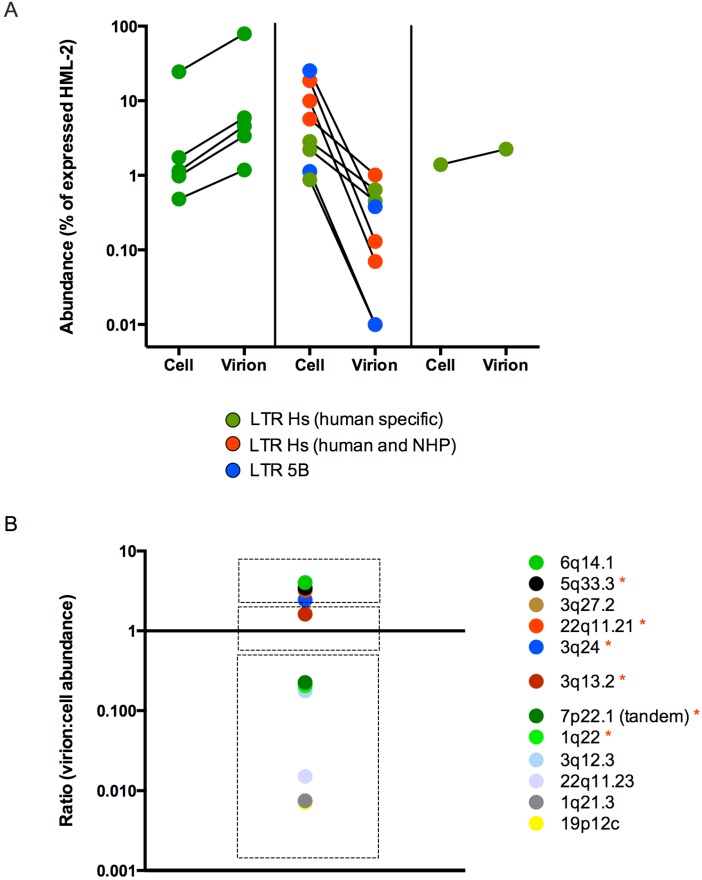Figure 3.
HML-2 packaging shows preference for recently integrated proviruses. (A) The abundance of proviruses expressed in the cell and packaged into virions was calculated as described in Figure 2. These values were plotted side-by-side to show an increased abundance (panel 1, left), decreased abundance (panel 2, middle) or similar abundance (panel 3, right) for proviruses packaged in virions as compared to their expression in the cell. Long terminal repeat (LTR) types of proviruses detected are indicated, with LTR Hs (human specific) in green, LTR Hs (in humans and non-human primates) in red and LTR 5B in blue. Two proviruses (12q24.11 and 4p16.3a) that were not detected in virions were plotted at 0.01% in panel 2. (B) The identities of the proviruses and the ratios of their virion to cell abundance are shown. Proviruses with (*) were predicted to be underrepresented by the in silico analysis (Figure 1).

